Cleft palate
A cleft palate is a gap in the roof of the mouth that results when the two sides of the palate do not join together during development.
What is a cleft palate?
The palate (mouth) has two main parts – a hard bone portion that is in the front half of the palate and a floppy soft part in the back half of the palate. Run your tongue along the roof of your mouth from your teeth backwards.
The front part is hard, because there is bone under this part of the palate.
The back part is soft because only small muscles are present within this portion.
If there is a cleft of the palate, the result is that the two sides of the palate have a gap between them.
A patient can have cleft palate alone (isolated cleft palate), with a cleft lip or part of a syndrome. Patients with cleft palate alone have different inheritance patterns and characteristics from patients with cleft lip and palate or cleft lip alone.
How common is a cleft palate?
Cleft palate alone occurs in about 1 in 1,500 children born in the U.S. It occurs more often in girls than in boys. The rates do vary by ethnicity with higher rates (1 in 500) in patients of Asian descent and lower rates (1 in 2,000) in patients of African descent.
A cleft lip and palate together is the most common occurrence. It is seen in about 1 in 600 children born in the U.S., occurring more often in boys than girls and more often on the left side than the right side.
There are several factors that may increase the risk of having a child with cleft lip and palate. While the inheritance of many genes from either parent and the maternal use of certain medications and substances (maternal smoking, anticonvulsants, alcohol, retinoic acid) are believed to increase the risk of having a child with a cleft, the majority of children born with a cleft of the lip or palate have none of these associated factors.
The way that the inheritance of many genes can affect the risk for having cleft of the lip or palate is difficult to understand. A simplified way to think about it is that there are many genes that slightly increase someone’s risk of having a cleft. The more of these genes a person has, the more likely it is that they will have a cleft. However, it is important to understand that in most cases, a family with a parent or child with a cleft still has a low risk of having more children with clefts of the lip and palate.
The most common scenario is that a family will have a child born with a cleft and no other history of a person with cleft lip and palate in either parent’s family. The risk of this family’s next child having a cleft is about 5% (1 in 20).
If a family has one parent with a cleft but no children with a cleft, the risk of their next child having a cleft is about 5% (1 in 20).
If a family has no parent with a cleft but two children born with clefts, the risk of their next child having a cleft is about 10% (1 In 10).
If a family has one parent and one child with a cleft, the risk of their next child having a cleft approaches 20% (1 in 5).
In other words, a family with one parent and one child born with a cleft has an 80% (4 in 5) chance of their next child NOT being born with a cleft. So even when several family members have had a cleft, the risk is higher than the average person, but still relatively low.
There are rare exceptions to this such as Van der Woude syndrome, which demonstrates autosomal dominant inheritance where 50% of a family’s children may be born with a cleft. For this reason, genetic testing should be done when there is a strong family history of clefts
What are the different types of a cleft palate?
There are several types of cleft palate, which can affect the type of surgery required.
Complete cleft palate occurs when there is a cleft of the hard and soft palate; the gap extends from just behind the front teeth all the way through the back of the palate. All of the bony and soft parts are involved.
Incomplete cleft palate occurs when there is a cleft of the soft palate only and at least some of the bone portion of the palate is intact. Usually, it is only the soft, floppy back portion of the palate that has the cleft.
Unilateral cleft lip and palate occurs when a cleft palate is associated with a cleft lip, and there is most often a complete gap from the front to the back, joining with the gap in the gum and lip.
Bilateral cleft lip and palate occurs when there is a cleft of the hard and soft palate associated with a bilateral cleft lip on both sides.
Submucous cleft palate occurs when the muscles of the soft palate have a gap, but the lining of the palate doesn’t have a gap, so it looks similar to a normal palate. There are often a few signs that something is wrong such as:
The uvula, or dangling bit at the very back of the palate, is often in two pieces rather than one.
There can be a bluish color to the soft palate.
You can feel a notch in the bone at the very back of the hard palate.
Most children with a submucous cleft palate have no problems from it and need no treatment. Occasionally, there can be speech problems that surgical repair can correct.
What are the causes of a cleft palate?
Cleft palate happens because the palate is formed from several different pieces that normally join together in the center of the palate early in the pregnancy, eight - 10 weeks from conception. Occasionally, these pieces do not join at all, or they can start to join but stop before the palate is fully formed, like a half-closed zipper.
While a cleft palate can occur by itself, (isolated cleft palate), it is also common for a cleft palate to develop as part of a syndrome.
Syndromes often seen with a cleft palate include:
How is a cleft palate treated?
There are many types of cleft palate repair, and your surgeon will present the very best options based on your unique case.
Cleft palate is important to discover and treat because the palate has two main functions, and is vital for several key areas of a child’s development such as:
Having a cleft palate can affect the way these develop, so we consider it essential that a child with a cleft palate is cared for through a multidisciplinary approach from birth to adulthood by a craniofacial team, like the one we offer here at Children’s Health.
Our care team includes speech-language pathologists (SLPs), including a bilingual SLP to offer special insight into the speech and language development of our Spanish-speaking cleft population.
Cleft palate multidisciplinary team
 Alex Kane, MDPlastic and Craniofacial Surgeon
Alex Kane, MDPlastic and Craniofacial Surgeon Carolyn Kerins, DDSPediatric Dentist
Carolyn Kerins, DDSPediatric Dentist Jessica May, MDPlastic and Craniofacial Surgeon
Jessica May, MDPlastic and Craniofacial Surgeon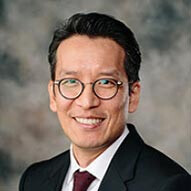 Yong Jong Park, DDSPediatric Orthodontics Specialist
Yong Jong Park, DDSPediatric Orthodontics Specialist Paymon Sanati-Mehrizy, MDPlastic and Craniofacial Surgeon
Paymon Sanati-Mehrizy, MDPlastic and Craniofacial Surgeon Angela Scheuerle, MDPediatric Genetics Specialist
Angela Scheuerle, MDPediatric Genetics Specialist James Seaward, MDPlastic and Craniofacial Surgeon
James Seaward, MDPlastic and Craniofacial Surgeon Michael Oppedisano, DMDInpatient Pediatric Dentist
Michael Oppedisano, DMDInpatient Pediatric Dentist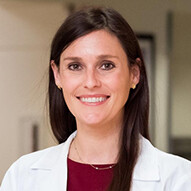 Kimberly Donner, PA-CPhysician Assistant - Otolaryngology
Kimberly Donner, PA-CPhysician Assistant - Otolaryngology Jessica Grant, PA-CPhysician Assistant - Plastic Surgery
Jessica Grant, PA-CPhysician Assistant - Plastic Surgery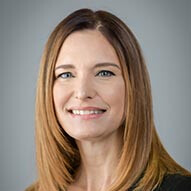 Laura Hanna, PA-CPhysician Assistant - Plastic Surgery
Laura Hanna, PA-CPhysician Assistant - Plastic Surgery Kimly Nguyen, PA-CPhysician Assistant - Plastic Surgery
Kimly Nguyen, PA-CPhysician Assistant - Plastic Surgery Riley Powers, PA-CPhysician Assistant - Plastic Surgery
Riley Powers, PA-CPhysician Assistant - Plastic Surgery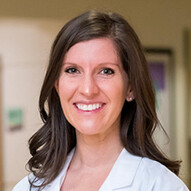 Emily Roman, PA-CPhysician Assistant - Otolaryngology
Emily Roman, PA-CPhysician Assistant - Otolaryngology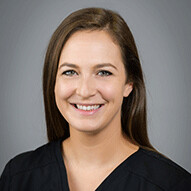 Sarah Scheiwe, PA-CPhysician Assistant - Plastic Surgery
Sarah Scheiwe, PA-CPhysician Assistant - Plastic Surgery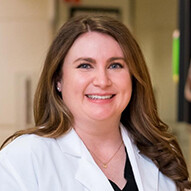 Elizabeth Wetz, PA-CPhysician Assistant - Plastic Surgery
Elizabeth Wetz, PA-CPhysician Assistant - Plastic Surgery Celia Heppner, PsyD, ABPPPediatric Psychologist - Plastic Surgery
Celia Heppner, PsyD, ABPPPediatric Psychologist - Plastic Surgery Cheryl Holihan, APRN, PNP-AC/PCNurse Practitioner - Otolaryngology
Cheryl Holihan, APRN, PNP-AC/PCNurse Practitioner - Otolaryngology Caroline Martin, APRN, PNP-AC/PCNurse Practitioner - Otolaryngology
Caroline Martin, APRN, PNP-AC/PCNurse Practitioner - Otolaryngology
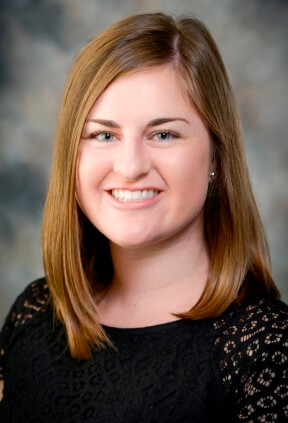 Caitlin Lentz, SLPSpeech Pathologist
Caitlin Lentz, SLPSpeech Pathologist Lincy SamSocial Worker
Lincy SamSocial Worker Courtney Van'T Slot, SLPSpeech Pathologist
Courtney Van'T Slot, SLPSpeech Pathologist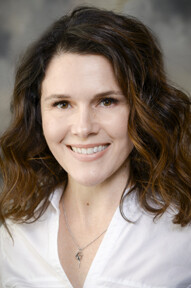 Kandi Trevino, SLPSpeech Pathologist
Kandi Trevino, SLPSpeech Pathologist